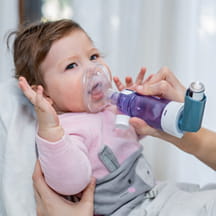Health care practitioners have long used cooling therapy to ease muscle inflammation. Researchers are now learning how these same benefits can apply to concussion treatment. A recently published study of adolescent concussion patients shows a significant improvement in Sport Concussion Assessment Tool (SCAT5) symptom scores following hypothermic therapy. The research is the first of its kind to focus on children and signals a potential breakthrough in concussion treatment for this population.
“I’ve been through this both as a doctor and a parent — it’s a frightening experience,” said Joseph Congeni, MD, director of sports medicine at Akron Children’s and lead study investigator at Akron Children’s Rebecca D. Considine Research Institute. “To help relieve some of the fear associated with the emotional and psychological issues of concussions really excites me.”
Having spoken with clinicians and families to better understand the issues with traditional concussion treatments, Congeni and his team set out to develop a solution that would be safe, effective, and well-tolerated. The result: pro2cool, a hypothermic device that provides selective cooling of the head and neck to reduce concussion symptoms.
The research, conducted by scientists from Akron Children’s, Cincinnati Children’s, University of Michigan, and Dayton Children’s Hospital, studied 167 participants, ages 12-19, who had suffered a concussion within the previous eight days. Half underwent two treatments (three days apart) with pro2cool, while the others received traditional concussion therapy consisting predominantly of rest.
The hypothermic treatment group saw 14% lower SCAT5 scores than the control population following the initial treatment and 25% lower after the second treatment.
Next steps
While pro2cool is not yet commercially available, the FDA has designated it as a “breakthrough device,” which should expedite its review. The designation also streamlines communications by giving the developers access to FDA experts during the approval process. Long term, the technology could make its way to sporting event sidelines. For now, the initial market approval could allow the device to be used in clinical settings, including school nurse’s offices.
Congeni and his team hope to conduct further testing on cooling therapy’s benefits for concussion treatment. Meanwhile, he considers the latest research a significant milestone in his nearly four-decade career in sports medicine. “There was talk 15 or 20 years ago about shutting down some contact sports and other activities that are very beneficial for young people,” Congeni said. “This study gives me hope that kids can continue to play in a safer way.”



